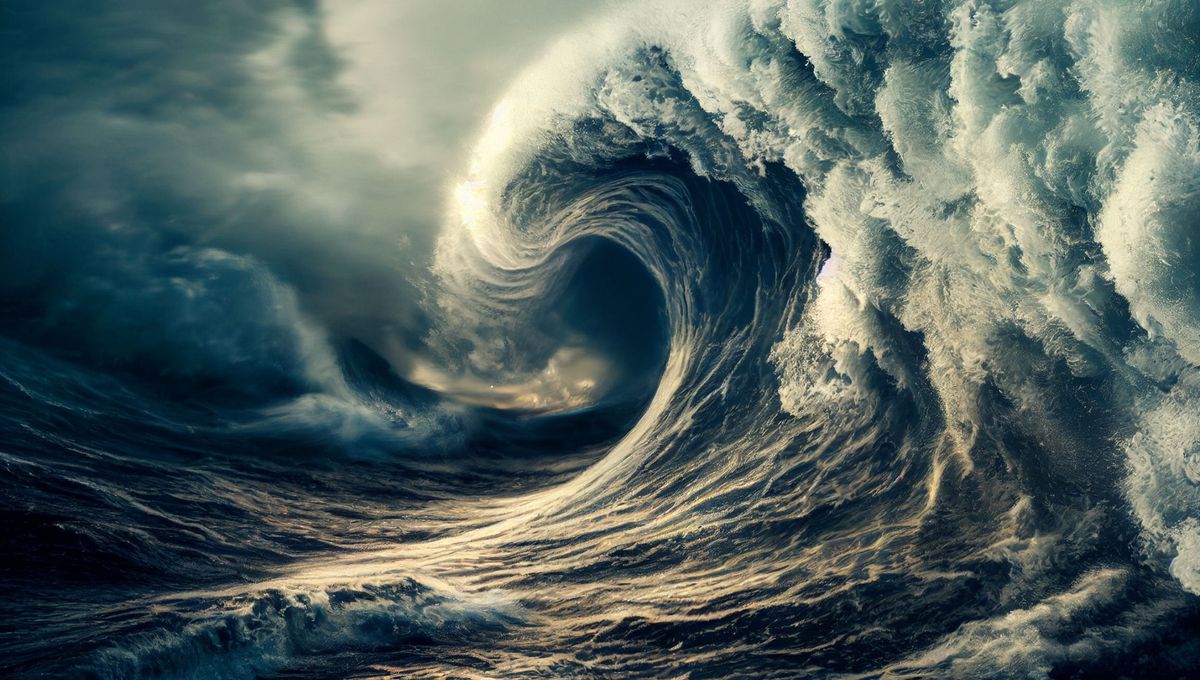
Thought tsunamis only happened in the ocean? Think again. Turns out lake tsunamis are a thing too, and they can be just as devastating – here’s everything you need to know about them.
What is a lake tsunami?
As you may well have guessed, a lake tsunami is a tsunami that occurs in a lake. They happen when the sudden displacement of large volumes of water causes waves to form.
The phenomenon is becoming increasingly common in places like Alaska and British Columbia, as well as other regions with mountain glaciers.
What causes lake tsunamis?
Lake tsunamis can be generated in a number of ways. Like ocean tsunamis, which are usually caused by an earthquake below or near the sea floor, lake tsunamis can also result from seismic activity. When lakes lie on or near a fault line, earthquakes can disrupt the lake bed and displace large amounts of water as a tsunami.
They can also be caused by landslides, avalanches, or glacier calving, which can send large amounts of debris into comparatively small bodies of water, forcing the water level to rise dramatically, potentially as a tsunami.
Delta collapse is known to cause lake tsunamis too. This is when the sand and gravel at the head of a lake (where it meets its river delta) give way.
Lake tsunamis can also be triggered by atmospheric changes – these are known as meteotsunamis – and volcanic processes.
How dangerous are lake tsunamis?
Although most lake tsunamis currently occur in remote locations, and so represent little threat to people, properties, and infrastructure, it seems the tide may be turning. According to geologist Bretwood Higman of Ground Truth Alaska, lake tsunamis in populated areas might become more frequent, thanks largely to climate change. Higman discussed the subject recently at the Seismological Society of America (SSA)’s 2024 Annual Meeting.
As temperatures spike and glaciers and permafrost melt, landslides will become more and more common, making lake tsunamis all the more likely, Higman said in a statement.
In Alaska, the geologist estimates the risk of a lake tsunami is high in Portage Lake – it’s “pretty much at the top of my list,” said Higman.
Regardless of where they occur, lake tsunamis can be catastrophic.
In November 2020, a huge landslide triggered a 100-meter (328-foot) tall lake tsunami in British Columbia. Around 18 million cubic meters (636 million cubic feet) of rock plummeted into a glacier lake, sending a vast torrent of water into Elliot Creek and the surrounding area, devastating the landscape.
“Imagine a landslide with a mass equal to all of the automobiles in Canada, traveling with a velocity of about 140 kilometers [87 miles] an hour when it runs into a large lake,” geomorphologist Marten Geertsema told CBC in 2022.
Forest and salmon spawning grounds were the main casualties in this instance, but such an event in built-up areas could have the potential to wipe out properties and infrastructure – and, in the presence of humans, could be deadly. A tsunami in Lake Michigan in 1938, for example, killed five people and endangered 27 others, as waves reached 3 meters (10 feet) high, reportedly appearing to come out of nowhere.
“There are places where we see the same kinds of geologic instability that preceded these other events, but there are a lot of people exposed,” Higman said, adding that lake tsunamis are “an emerging, climate-linked hazard”.
So there you have it, tsunamis are not confined to the open ocean. In fact, the tallest one on record, which hit Alaska in 1958 with waves up to 524 meters (1,720 feet) high, happened in a fjord.
All “explainer” articles are confirmed by fact checkers to be correct at time of publishing. Text, images, and links may be edited, removed, or added to at a later date to keep information current.
Source Link: What Is A Lake Tsunami?